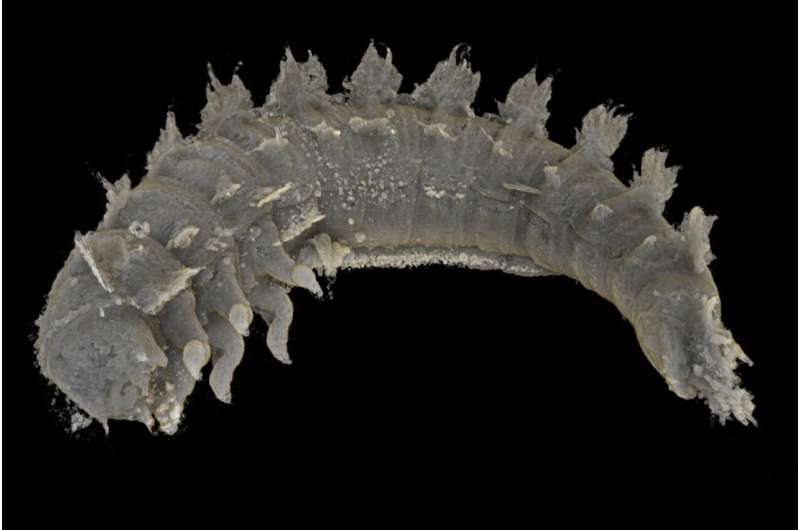Paleobiology: Rare beetle larva found in amber

LMU zoologists have found the first ever riffle beetle larva in Baltic amber.
Amber is a treasure trove of information from the Earth's past, as it can preserve trapped plants and animals down to the smallest detail. The fossilized tree resin is an outstanding source for fossils of soft-bodied creatures such as insect larvae, which are less frequently preserved in sedimentary deposits (stony fossils).
Most of the amber in Europe comes from the Baltic amber forest, which covered large areas of today's northern Europe 33-38 million years ago. Scientists led by LMU zoologist Joachim Haug have now discovered the first ever riffle beetle larva in Baltic amber. Although riffle beetles (Elmidae) seem to play an important role in modern freshwater ecosystems, there is scant fossil evidence for this group, and what evidence there is comes from adult specimens.
Using microtomography and synchrotron radiation analyses, the scientists also managed to reveal details of the larva that were obscured by inclusions and turbidity in the amber. These showed that the larva possesses unusually large rows of triangular plates on the upper part of its body. The larva's presence in Baltic amber points to the existence of oxygen-rich rivers in the Baltic amber forest, as the larvae of click beetles mostly live in such habitats.
The discovery was reported in PeerJ.
More information: Ana Zippel et al, The first fossil immature of Elmidae: an unusual riffle beetle larva preserved in Baltic amber, PeerJ (2022). DOI: 10.7717/peerj.13025
Journal information: PeerJ
Provided by Ludwig Maximilian University of Munich





















